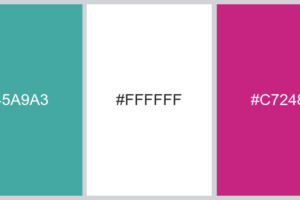The web sphere is swarmed with a whole lot of literature dedicated to the need of having responsive websites. We keep hearing tips and tricks on how we can make our websites more and more responsive, and how it will help us in making our site being accessed and read more by attracting traffic in greater measure.
But, one often aspect of website responsiveness often overlooked is responsive typography. The webmasters, while making their best efforts to make sure that the design of the website adapts itself to the varying screen sizes and operating system platforms, do not the kind of attention that typography commands.
It is imperative that the typography on your website seamlessly adapts itself to different layouts – whether they are that of the desktop screens or of the mobile screens. The golden standard of web design dictates several rules corresponding to typography:

The Text Size Flexibility
The first thing that comes to mind when we think of responsive typography is making the text adaptive to the different sizes and resolutions. And while we consider that, at the same time, we should also ensure that the same text should be flexible enough so that when it resizes, it is still readable and comprehensible for the end user.
If you are making your users to squint their eyes to read the text on your site, you have already made a wrong beginning.
The Right Font
granted, why should you go mainstream if you have a host of inventive and beguiling fonts at your behest. However, the fancy font you are going with, does it suit a website’s page , or is just good enough for the power point presentations? The web pages work differently than your power point presentations or a word doc for that matter. Fancy fonts hardly intrigue the users the way you think they do. What users prefer instead is a font that makes the text readable without making their eyes sore. So, while you are welcome to try different fonts, do think from the user’s perspective. If a font that looks truly awesome makes you visit a letter twice to make it out, the font is obviously not the suitable one.
Bold Font Colors
While black happens to be the standard font color, you can indeed use all kinds of font color for the text on your webpage as long as they are in strong contrast with the background. If the font color is light toned against the light toned background, that is only making it unreadable.
Keep the Right Line Length and Spacing
The web space is not as expensive as you might think it is. You do not have to stuff all the words in a single line. Clutter is any websites biggest adversary and by keeping long line lengths, you are only cluttering your website in great measure. The most ideal line length according to experts is around 70 characters per line. On smaller screens, it can be 50 characters,or even less. But keeping it extensively more will only make your users skip words and lines and jump to the random portions.
When the screen size is smaller, you can arrange the typeface in a manner that it occupies the screen size completely along its width, and when you have bigger screens, arranging it in a column like structure will facilitate better readability.
Besides the line length, you also need to evaluate the ideal spacing between the lines. And this can be done while keeping the line length in account as both of these have a direct impact on each other.
Different Typeface for Different Content Portions
The uniformity in fonts and typefaces always looks good. But on any website, the content can be segregated into different types, namely titles, subtitles and the body of the content. And you can well and truly experiment with fonts when it comes to this variety. While this is not critical for your website’s responsiveness, but it does add to the visual appeal by highlighting the elements of content that need to be highlighted. The variation in fonts doesn’t come in the way of user readability at all.
Typographic responsiveness can power you seize a great competitive advantage. Get it right on the mark.
Sarah Parker is a blogger cum WordPress developer. She adores composing data rich websites on converting PSD to WordPress theme service. Right now, she is utilized with Designs2html Ltd, a markup conversion organization that has conveyed top-grade markup transformation administrations since 8 years.


